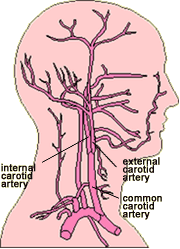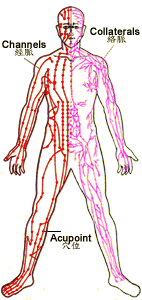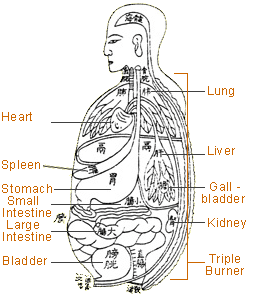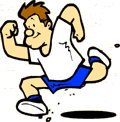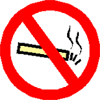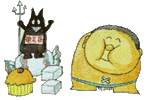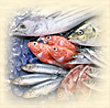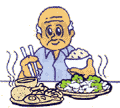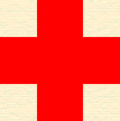Stroke
Stroke : Definition
Western Medicine
Main Arteries supplying Blood to the brain
Stroke, sometimes called "brain attack" or in earlier times "apoplexy," is medically known as a cerebrovascular accident (CVA). It occurs when a blood vessel is so severely blocked or damaged that part of the brain is deprived of oxygen long enough for brain tissue to die. It is one of the most common causes of death and disability worldwide.
While some people die from their first stroke about 25 percent of people who suffer a stroke die within one month. Many people recover but are left with brain damage of different degrees, depending on what part of the brain has been affected. If it occurs in the speech area the victim may be left with no speech, or may forget a second language learned in childhood. If it affects the "motor area" controlling movement, the person may be left paralyzed on one side of his body. Stroke is more common in "first world" countries where people survive childhood infections that still kill many people in "third world" countries. Because vaccination, cleaner water systems and antibiotic use have effectively reduced deaths from infectious diseases, death from stroke occurs in older people and is often caused by lifestyle habits.
How a stroke happens:
Strokes are commonly caused in three ways.
1.Hemorrhage
This occurs when an artery bursts and bleeds into brain tissue. The part of the brain that should have been supplied with oxygen by that artery is deprived of oxygen and begins to die off.
2.Thrombosis
A thrombus is a clot. If it forms in an artery supplying a part of the brain, the blood supply will be blocked and damage occurs because that part of the brain is deprived of oxygen.
3.Embolus
This is the most common cause of stroke. It occurs when a clump of tissue, usually a blood clot, forms deposits blocking arteries somewhere else in the body (often the carotid arteries in the neck), and then breaks off and gets stuck in a small artery in the brain.(See above picture) Again, this prevents a part of the brain from getting oxygen so the cells in that part of the brain die.
Chinese Medicine
Chinese people in ancient times classified the type of stroke according to where it originated. Mostly they thought stroke was caused by an invasion of exogenous pathogens (factors from outside the body that invade it and cause illness), and called this a true stroke or exogenous stroke. Stroke induced by endogenous pathogens (factors originating from inside the body causing disease) were labeled as stroke-like or called an internal stroke. Now, according to modern day Traditional Chinese Medicine (TCM) understanding and clinical practice, stroke is thought to be mostly due to internal factors.
These factors whether originating from inside or outside the body are generally attributed to "wind evils." Wind evils are negative influences that upset the healthy balance of the body. The Chinese likened these influences to being knocked down by a natural wind because of their sudden onset and lingering, changeable nature. In ancient China, the disease was referred to as "zhongfeng," which literally translated means "wind stroke." According to Chinese medicine theory, stroke is not thought of as a disease affecting the brain only. It can affect either the meridians or a whole range of organs (viscera).
An early definition of a stroke can be found in the classic medical book named "Huang Di Nei Jing" (The Yellow Emperor's Classic of Internal Medicine), written during the Han Dynasty (approx. 200 B.C). Under this book's Suwen (The Book of Plain Questions) section, stroke is described in the following manner. "The organ's acupoints are the doors for evil winds to flow into the body. When wind flows inside the body, it will turn into internal wind-evils. If allowed to stay inside, the internal wind evils cause stroke." This book also described stroke related symptoms such as hemiplegia (paralysis on one side of the body), difficulty in speech, and facial distortion. (See diagrams above) Another TCM medical classic named "Synopsis of the Golden Chamber" (300A.D.), stated that stroke was mainly caused by a lack of blood in small vessels, a lack of qi flow, and the invasion of outside evil winds into the body. The symptoms of a stroke were described according to what part of the body the evil winds invaded. It stated "if a evil wind invades the collaterals (these are part of the meridian system and they run more on the surface of the body), the skin and muscles feel numb. When it invades the channels (these are also part of the meridian system and they run deep and vertical in the body), the body will become seriously ill. When it invades the hollow organs or Fu-organs which consists of the stomach, small intestine, large intestine, gall bladder and bladder, the body will become unconscious; and when it invades the solid organs or Zang-organs, which consists of the liver, heart, lungs, spleen and kidneys, speech difficulties and drooling can occur." This book also divides stroke into two categories, strokes involving the meridians and strokes involving the viscera or organs. Stroke in the later medical classics like " A Thousand Golden Prescriptions", "Medical Secrets of an Official" and " Prescriptions for Saving Lives", have similar classifications. Much progress was made understanding stroke in the Jin and Yuan Dynasties, and consequently many more TCM prescriptions were developed or improved for treatment of this disease.
Stroke is characterized by a combination of symptoms such as a sudden fall, unconsciousness accompanied by hemiplegia (paralysis on one side of the body), an appearance of facial distortion or the presence of a speech disorder. In minor cases, individuals may not suddenly collapse or lose consciousness. Instead, they may just suffer from hemiplegia (paralysis on one side of the body) and facial distortion.

